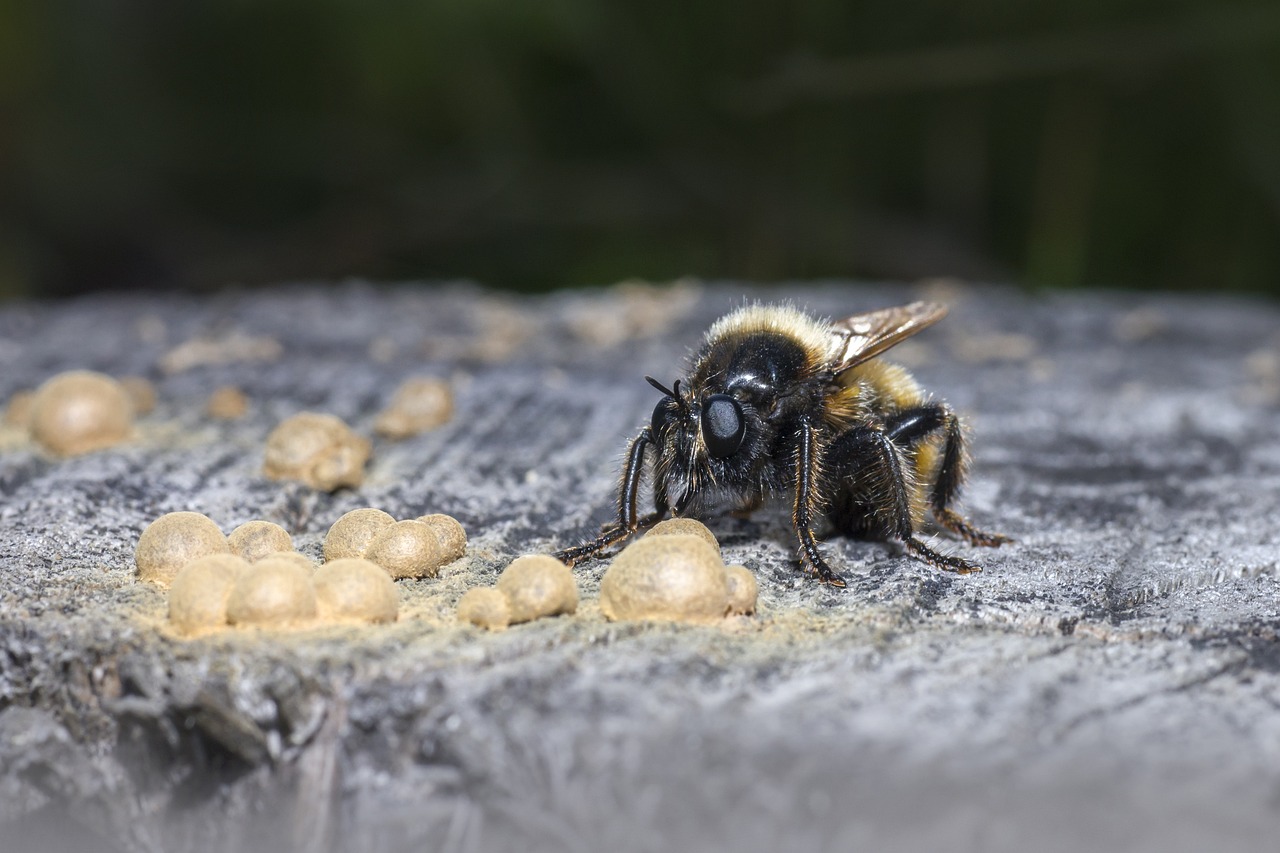The Bumblebee Robberfly (Laphria flava) is a remarkable species of robber fly that is part of the Asilidae family. This fly is well-known for its mimicry of bumblebees, which helps it blend into its environment and avoid predators. Here’s a closer look at this fascinating insect:
Description
- Size:
- Adults typically range from 14 to 18 millimeters in length.
- Appearance:
- Body: Laphria flava has a stout, robust body that is densely covered with yellow and black hairs, giving it a striking resemblance to a bumblebee.
- Coloration: The thorax is yellowish with dense yellow hairs, while the abdomen is often black with segments covered in yellow hairs. This coloration and patterning closely mimic that of a bumblebee.
- Wings: The wings are clear but may have a slight brownish tint. They are held open in a characteristic “V” shape when at rest.
- Legs: The legs are strong and bristly, aiding in the capture and handling of prey.
- Eyes: Like other robber flies, Laphria flava has large, compound eyes that provide excellent vision for spotting prey.
Behavior and Ecology
- Habitat:
- Laphria flava is typically found in a variety of habitats, including woodland edges, meadows, and gardens, where it can easily blend in with the bumblebees it mimics. It is most commonly observed during the summer months.
- Mimicry:
- The bumblebee-like appearance of Laphria flava serves as a form of Batesian mimicry, where a harmless species imitates the appearance of a more dangerous or unpalatable species (in this case, bumblebees) to avoid predators.
- Diet:
- Predatory Behavior: Laphria flava is a voracious predator. It hunts other insects, including flies, bees, beetles, and even other robber flies. The fly captures its prey in mid-air, using its strong legs to grasp and immobilize it.
- Feeding: Once captured, the fly uses its sharp proboscis to inject digestive enzymes into the prey, liquefying the internal tissues, which it then sucks out.
Lifecycle
- Eggs:
- Females lay their eggs in soil or decaying wood, where the larvae will develop.
- Larvae:
- The larvae of Laphria flava are also predatory, feeding on other insect larvae within the soil or decaying wood. They are less conspicuous than the adults and spend most of their time hidden in their substrate.
- Pupation:
- The larval stage lasts several months, after which the larvae pupate. The pupation stage occurs within the soil or wood, and after a few weeks, adult flies emerge.
- Adults:
- The adult flies are active in the warmer months, particularly from late spring to early autumn. During this time, they are often seen perched on vegetation, basking in the sun, or hunting for prey.
Ecological Role
- Predator:
- As a predator of other insects, Laphria flava plays a crucial role in controlling insect populations. It helps maintain a balance in the ecosystem by preying on a variety of species, some of which might otherwise become pests.
Conservation Status
- Distribution:
- Laphria flava is widely distributed across Europe and parts of Asia. It is not currently considered at risk, though like many insects, it could be affected by habitat loss and environmental changes.
- Conservation Efforts:
- Conservation of natural habitats, particularly woodlands and meadows, is essential for the survival of Laphria flava and other similar species.
Summary
The Bumblebee Robberfly (Laphria flava) is an intriguing species that exemplifies the fascinating adaptations insects can develop. With its bumblebee mimicry, this fly avoids predators while efficiently hunting its prey. Found in a variety of habitats across Europe and Asia, Laphria flava plays a significant role in controlling insect populations. Its presence highlights the complexity and interconnectivity of ecosystems, demonstrating how even small predators can have a substantial impact on their environment.
Views: 24
Subscribe to the newsletter:
